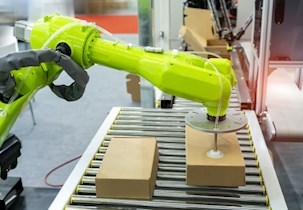Use market feedback to enable reliable product development
Reliability is in focus in product development and production, but what happens once the product has been delivered to the customer?
How do you collect data and loop it back into the product development process?
The most successful companies are skilled at collecting data from observations and intrinsic field failures, analysing data and looping the information back into the product development process. A system for handling feedback from the market can range from complex" Post Market Surveillance" systems with analysis of trends, which is required for companies that produce medical devices, to a more informal interaction between the service department and R&D. At some companies, relevant stakeholders meet to discuss important matters that need to be addressed immediately and dealt with in the long term to ensure that the problem does not recur in new products.
Make use of valuable feedback from the market
All companies should be able to utilise feedback from the market. The performance contract "Reliable product development based on the Physics of Failure" aims to develop a model for analysing field data to loop it back to the development process and reduce service and warranty costs.
Goal: an effective model to manage feedback from market
The ambition is a simple and effective model which can be used by all companies not faced with regulatory requirements for specific methods for "Post Market Surveillance". The model is based on a study of how five selected Danish and international companies handle and manage feedback from the market. The study investigates companies that have just got their product onto the market and those with mature products and their systems for handling and analysing products that have failed in the field. It also assesses the companies' ability to use the results in subsequent product development. The potential for improved user information is also studied in connection with field failure by implementing software and/or sensors in products.
New model for failure analysis aids product development and refinement
The market feedback model consists of two parts; a process for handling and managing complaints and how the information in these can be looped back into the development process, and a method for systematically finding the root cause or critical failure mechanisms (Physics of Failure).
Classic failure analysis methods not always sufficient
Practice has shown that classic failure analysis methods such as SEM (Scanning Electron Microscopy), X-Ray, EDS (Electron Dispersion Spectrum) and SAM (Scanning Acoustic Microscopy) are necessary but not always sufficient for determining the critical failure mechanisms in complex problems. Here it is necessary to expand on this with a systematic process for evaluating the analysis results and possibly supplement it with expert advice within specialist areas.
This was the case in one example involving a sensor for measuring water salinity that failed during use. Countless analyses and tests had been performed, and several sensor modifications were made without allowing the manufacturer to achieve an adequate service life when the sensor was subjected to warm water in the use environment.
Refined failure analysis method discovers critical failure mechanism
After a systematic process based on methods like Fishbone and 5 Whys supplemented with further failure analysis, hydrolysis was found to be the critical failure mechanism. Armed with this knowledge, the company optimised the type of plastic used, thereby avoiding the problem.
The processes developed in connection with the market feedback project are verified in demonstration projects for companies that would like to enter into a collaboration.
Contact us to find out how we can work together on using market feedback and failure analysis to refine and improve products.




